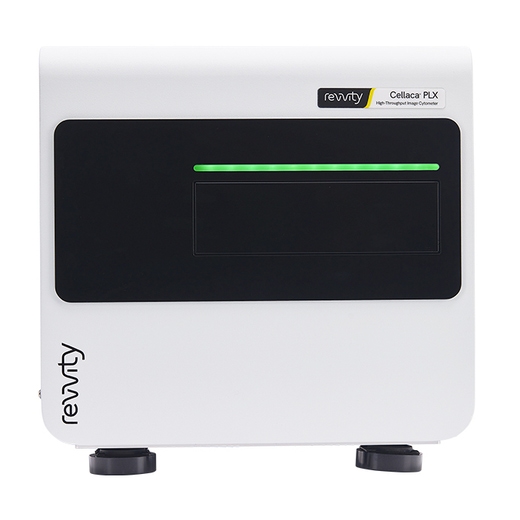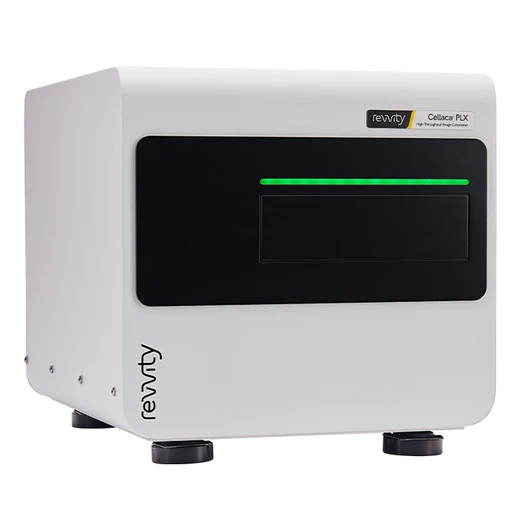
Cellaca PLX High-throughput Image Cytometer









Cellaca PLX High-throughput Image Cytometer









Cellaca PLX High-throughput Image Cytometer









The Cellaca™ PLX system with Matrix analysis software and dedicated reagents and consumables provides a benchtop solution for accurate measurements of small sample volumes to easily perform rapid subpopulation analysis for downstream processing.
For research use only. Not for use in diagnostic procedures.
Product information
Overview
The Cellaca PLX system with Matrix analysis software and dedicated reagents and consumables provides a benchtop solution for accurate measurements of small sample volumes to easily perform rapid subpopulation analysis for downstream processing.
Multiplexing Made Easy
The Cellaca PLX image cytometry system is easy to use, performing simple yet sensitive cell counts, viability readouts, and multiplex analysis in seconds.
Small Sample Volume
The sample-efficient Cellaca PLX requires between 15 – 50 uL per single sample analysis. That’s 10-30 times less sample volume required per test, compared to a flow cytometer.
Speed with Sensitivity
The time to downstream processing is shortened by multiplexing with four channels with viability readouts at one minute per sample.
Optimized Assays and Kits
Our simple-to-use, mix, incubate, wash, and read reagent kits provide immunophenotyping plus viability multiplexing assays using disposable, low fluorescence consumables.
User-Friendly Software
Optimized protocols streamline surface marker staining, vitality, and apoptosis analysis with step-by-step methodologies and customizable result presentations.
Low Auto-Fluorescent Consumables
Allow for accurate surface marker detection.
Hardware, Instruments, and System Capabilities
The Cellaca PLX’s ability to consistently image, de-cluster, and report cell counts, viability, concentration, and phenotyping data makes it a versatile instrument during every stage of cell line development. The Cellaca PLX allows labs to shorten the time to downstream processing by multiplexing with up to four channels to obtain critical viability readouts at one minute per sample with no warm-up time. The cell population data can then be viewed as a histogram, scatter plot, dot plot, or contour plot for easy data viewing and analysis.
Whether using it as a complementary method for additional data or as the first stop before starting downstream assays, image cytometry can save laboratories time and prevent excessive sample loss. With this output speed, researchers can quickly perform cell purity checks at the bench and then easily continue with downstream assays without waiting for a flow cytometer. By performing multiplexing assays at the bench, laboratories can reduce the reliance on a busy flow core facility, saving flow cytometry for more complicated or detailed assays.
Expert Support for Assay Development
On-site, remote, and hybrid training are available to assist with initial setup and continued assay support for improved workflows.
Remote and Field Serviceability
Calibration-free instrumentation with minimal routine maintenance. No clogging or liquid waste stream.
Automation Ready
Compatible with robotic integration and automated liquid handling systems.
21 CFR Part 11 Ready
- Audit trails, time stamping, user access control, and electronic signatures.
- File locking and change tracking.
- Creation of new customizable defined roles with multiple configurations available
- A close-looped database system to aid with data integrity and security.
- Stress-Free Intuitive Software
Built-in assays with optimized settings for over 400 individual cell types.
Configurable data and calculation reports with graphs, images, charts, and tables for ease of information sharing.
Low Auto-Fluorescent Consumables
Cellaca PLX consumable slides provide a safe and self-contained environment for the sample which then does not require a decontamination procedure of the instrument at the end of each run. The slide holder, which is included with the instrument, can accommodate 4 slides or 8 samples per experimental run.
Cellaca PLX Optimized Assay Reagents and Kits
The Cellaca PLX system provides flow-like data with simple-to-use, mix, incubate, wash, and read reagent kits that provide immunophenotyping plus cell counts and viability multiplexing assays using disposable, low fluorescence consumables. Quickly perform cell counts, concentration, purity checks, and viability at the bench with Cellaca PLX immunophenotyping kits which combine CD3, CD4, and CD8 surface marker detection with cell viability in a single multiplex assay.
Available assay kits include:
- Immune cell Phenotyping
- Apoptosis detection
- High-throughput cell viability
- Fluorescent protein analysis
Cellaca PLX Applications
With the Cellaca PLX Platform, you can:
- Quickly perform cell purity checks and viability at the bench with Cellaca PLX immunophenotyping kits which combine CD3, CD4, and CD8 surface marker detection with cell viability in a single multiplex assay.
- Stain transfected cell lines with viability dyes to determine the percentage of transfected or transduced cells that are live/dead.
- Perform routine viability measurements as well as apoptosis functional assays to determine cell health.
Specifications
| Brand |
Cellaca
|
|---|---|
| Unit Size |
1 Each
|
Image gallery








Cellaca PLX High-throughput Image Cytometer








Cellaca PLX High-throughput Image Cytometer








Video gallery

Cellaca PLX High-throughput Image Cytometer

Cellaca PLX High-throughput Image Cytometer

Resources
Are you looking for resources, click on the resource type to explore further.
Streamlining single-cell sequencing workflows using Cellometer and Cellaca high-throughput cell counters
Single-cell sequencing...
The hemacytometer has been an essential tool for hematologists, medical practitioners, and biologists for over a century. In this...
Single-cell sequencing is a rapidly evolving approach to delve into the genomic, transcriptomic, epigenomic, and proteomic...
Technological advancements have rapidly boosted the adoption of single-cell sequencing experiments – by increasing the number of...


How can we help you?
We are here to answer your questions.






























